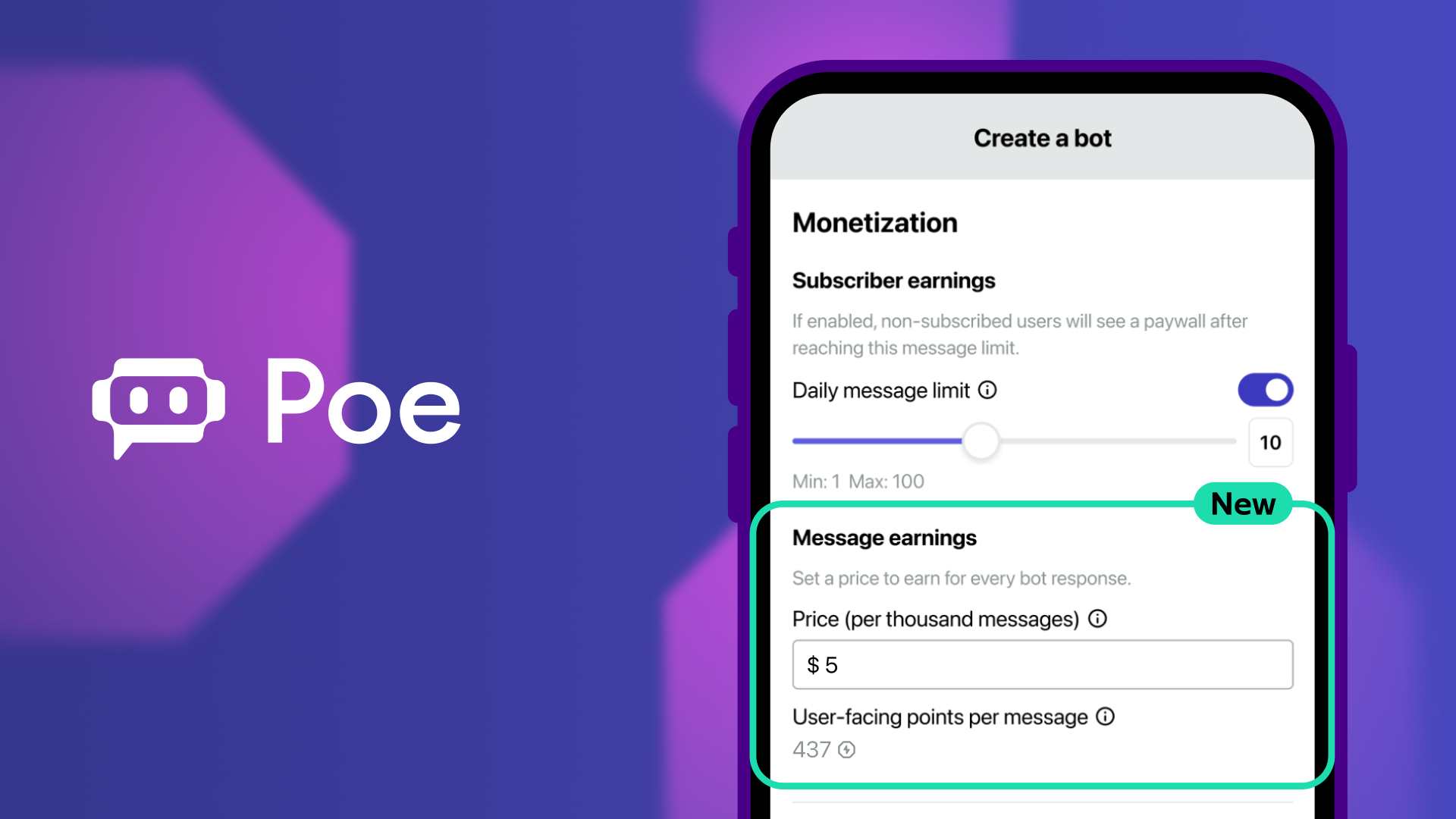
A significant development in the realm of artificial intelligence collaboration has emerged from Quora’s Poe platform, which recently unveiled a new group chat functionality designed to integrate diverse AI models into a shared conversational space. This enhancement allows individuals globally to initiate collaborative dialogues involving up to 200 participants, facilitating interaction with over 200 distinct AI models, encompassing generators for text, imagery, video, and audio, all within a unified chat interface. This strategic expansion marks a pivotal moment, shifting the paradigm of AI engagement from solitary interactions to a more dynamic, communal experience.
Poe’s Strategic Evolution: Aggregating AI Intelligence
Poe, an acronym for "Platform for Open Exploration," was conceived by Quora as an aggregator, a central hub where users could access and experiment with a wide array of large language models (LLMs) and other generative AI tools from various providers. In an increasingly fragmented AI landscape, where different companies offer specialized or general-purpose models, Poe’s value proposition lies in its ability to offer a comprehensive, vendor-agnostic environment. Instead of navigating multiple interfaces or subscriptions, users can compare, contrast, and utilize the strengths of different AIs—from conversational agents like Claude to advanced image generators or specialized research bots—all under one roof. This approach aligns with Quora’s historical mission of democratizing knowledge and facilitating access to information, extending it now to the cutting edge of artificial intelligence. The introduction of group chats amplifies this vision, transforming what was once a personal exploration into a collective endeavor, potentially unlocking new dimensions of creativity, problem-solving, and information synthesis.
The Dawn of Collaborative AI: A Historical Perspective
The evolution of artificial intelligence has largely progressed through distinct phases. Initially, AI tools were highly specialized, performing specific tasks like chess-playing or data analysis. The advent of large language models like GPT-3, and later ChatGPT, in the early 2020s, brought conversational AI into the mainstream, democratizing access to powerful text generation and understanding capabilities. This era was characterized by individual users interacting directly with a single AI model, treating it as a personal assistant or creative partner.
However, the rapid proliferation of AI models, each with unique strengths—some excelling in creative writing, others in logical reasoning, and still others in multimodal content generation—soon highlighted a new challenge: how to leverage these diverse capabilities cohesively. The idea of collaborative digital spaces is not new; platforms like Google Docs revolutionized document creation, and Slack transformed team communication. The natural progression for AI, therefore, was to move beyond individual interaction towards shared environments.
Poe’s move into group chats is particularly timely, coming shortly after OpenAI, a leading force in AI development, commenced pilot programs for its own group chat features for ChatGPT in select international markets, including Japan, New Zealand, South Korea, and Taiwan. This parallel development underscores a growing industry consensus that the next frontier for AI lies in facilitating collaborative human-AI and even AI-AI interactions within shared digital spaces. This shift mirrors the broader technological trend of "super apps" or integrated platforms that consolidate multiple functionalities, simplifying user experience and fostering deeper engagement. The competitive landscape among AI developers is not just about raw model power but increasingly about innovative application and user-centric features that enhance utility and accessibility.
Unlocking New Interaction Paradigms: Beyond the Individual Chatbot
The integration of group chat functionality into Poe is poised to redefine how individuals, teams, and communities leverage artificial intelligence. No longer confined to one-on-one dialogues, AI models can now act as integral participants in group dynamics, offering immediate, multi-faceted assistance. Quora has articulated several compelling scenarios where this feature could prove transformative. For instance, a family planning a vacation could utilize the search capabilities of Gemini 2.5 to research destinations, while simultaneously consulting o3 Deep Research for cultural insights and Eleven Labs v3 for generating audio guides, all within a single group conversation. This eliminates the cumbersome process of switching between applications and manually synthesizing information, streamlining complex planning activities.
Beyond travel, the potential applications extend across various domains. Creative teams might use the group chat to brainstorm visual concepts for a mood board, deploying an array of image generation models to rapidly iterate on ideas, gather diverse aesthetic inputs, and refine visual narratives collectively. Educational settings could benefit immensely, with study groups collaborating on complex assignments, using different AI models to explain difficult concepts, generate practice questions, or even simulate debates on historical or scientific topics. Similarly, for entertainment, groups could engage in interactive trivia games powered by specialized quiz bots, fostering a new genre of AI-enhanced social gaming. The ability for users to create and share their own custom bots further democratizes AI development, allowing communities to tailor AI assistance to their specific needs and interests, fostering a vibrant ecosystem of specialized AI agents.
Technical Underpinnings and User Experience
The technical achievement behind Poe’s group chat functionality is significant, requiring the seamless orchestration of numerous disparate AI models and their respective APIs. Integrating over 200 distinct AI models—ranging from advanced large language models like Claude 4.5 Sonnet and GPT-5.1, to specialized generators such as Eleven Labs Music for audio, Nano Banana for specific niche tasks, Kling 2.5 Turbo Pro for enhanced processing, Sora 2 Pro for cutting-edge video, and Veo 3.1 for visual content—into a cohesive group environment presents substantial engineering challenges. Ensuring that these models can process and respond to multi-user inputs, maintain context across a dynamic conversation, and deliver consistent performance without significant latency is crucial for a positive user experience.
Quora engineers dedicated over six months to developing this feature, emphasizing robust backend infrastructure and intuitive user interface design. Users can initiate a group chat directly from the Poe app’s home screen or the website, poe.com, simplifying accessibility. A critical component of the user experience is the real-time synchronization of chat history across all devices. This means a user can begin a conversation on a desktop computer, seamlessly transition to a mobile device, and pick up exactly where they left off, preserving conversational flow and convenience. This cross-device continuity is a hallmark of modern digital communication platforms and is essential for maintaining engagement in collaborative AI environments. The ongoing commitment to refine the feature based on user feedback post-launch indicates an agile development strategy aimed at continuous improvement and adaptation to real-world usage patterns.
Market Dynamics and Competitive Landscape
Poe’s launch of multi-model group chats is a bold move that intensifies competition in the rapidly evolving AI market. By offering an integrated platform that supports a wide spectrum of AI models, Poe differentiates itself from single-model chat applications. While OpenAI’s ChatGPT has captured significant public attention, Poe’s strategy as an aggregator allows it to offer unparalleled versatility, leveraging the collective strengths of multiple developers. This "platform of platforms" approach could appeal particularly to power users, developers, and enterprises seeking flexibility and access to best-in-class models for various tasks without being locked into a single ecosystem.
The market implications are multifaceted. For AI model providers, Poe offers another channel for distribution and user engagement, potentially increasing their reach. For users, it fosters choice and encourages a more nuanced understanding of different AI capabilities. From a competitive standpoint, this development could pressure other AI companies to accelerate their own multi-modal and collaborative features. Google, with its Gemini models, and Anthropic, with its Claude series, are key players who may need to further emphasize their integration capabilities or develop their own robust multi-AI collaborative environments to remain competitive. The long-term success of such platforms will likely hinge on their ability to maintain neutrality, ensure high-quality integrations, and foster a vibrant community of both AI developers and end-users.
Societal Implications: Opportunities and Challenges
The emergence of collaborative AI environments like Poe’s group chats carries significant societal implications, presenting both immense opportunities and potential challenges. On the opportunity front, these platforms can democratize access to advanced AI capabilities, making sophisticated tools available to a broader audience for education, creative endeavors, and professional productivity. They can foster new forms of human-AI collaboration, where AI acts less as a simple tool and more as an intelligent participant, augmenting human capabilities in unprecedented ways. This could accelerate innovation in fields ranging from scientific research to artistic creation, enabling diverse groups to tackle complex problems more effectively.
However, the introduction of AI into group interactions also raises important ethical and practical considerations. Privacy in group chats, especially when interacting with AI models that process and store conversational data, becomes a paramount concern. Users must be aware of how their data is handled and shared across different AI providers. The potential for misinformation or biased outputs from AI models, amplified within a group setting, also requires careful consideration. Platforms will need robust moderation tools and clear guidelines for responsible AI use. Furthermore, the dynamics of human-AI group interactions are still largely unexplored; understanding how people will adapt to and integrate AI "voices" into their collaborative processes will be crucial. Issues such as accountability for AI-generated content in a group context, or the potential for AI to inadvertently influence group consensus, will need careful navigation as these technologies mature.
The Road Ahead: Iteration and Innovation
Quora’s commitment to continuous improvement based on user feedback signals a dynamic future for Poe’s group chat functionality. The company explicitly states that the "space of potential group interactions mediated by AI and collaboration opportunities with AI is vast and currently under-explored." This suggests a long-term vision that extends beyond the current feature set. Future iterations might include more sophisticated moderation tools, advanced permissions for group administrators, deeper integration with other productivity platforms, or even the development of specialized "group AI agents" designed for specific collaborative tasks.
The ability for users to create and share custom bots within these groups is a particularly powerful aspect, fostering a community-driven approach to AI utility. This open-ended design could lead to unforeseen use cases and innovations, as users adapt the technology to meet their unique needs. As AI models continue to advance in capabilities and multimodal understanding, the collaborative potential of platforms like Poe will only grow. The journey from individual AI assistants to integrated, multi-AI collaborative spaces represents a significant leap forward, promising to reshape how we interact with technology and each other in the digital age.




